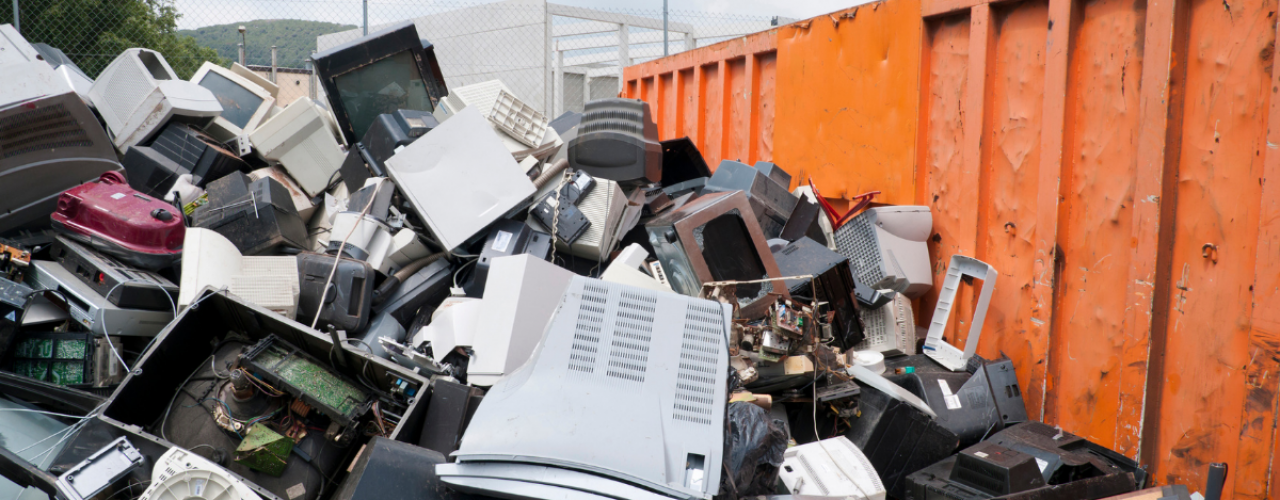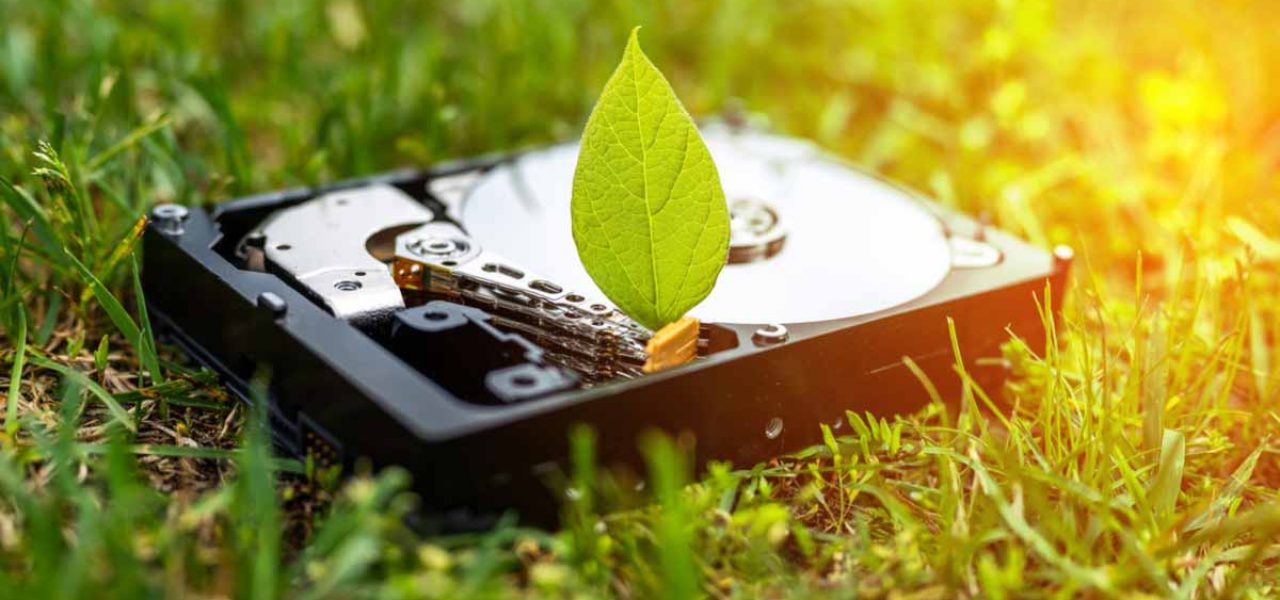Electronic waste consists of materials and products containing substances that can damage or harm health or the environment. Examples include asbestos, lead, mercury, needles, blood, Biological or Bio-Waste, and hazardous waste materials, making e-waste disposal a sometimes problematic process.
Since many such substances are used in the manufacture and operation of computing and electronic equipment, e-waste is often taken as synonymous with Electronic waste. This type of e-waste typically contains toxic and hazardous materials such as lead, mercury, chromium, and chemical flame retardants — all of which have the potential to make their way into soils and water supplies, damaging human habitats and natural ecosystems. So proper electronic disposal typically requires special locations or techniques.


Let’s now consider how to dispose of electronics. It’s reckoned that in excess of 130 million mobile phones and 3 million tons of electronic equipment such as TV sets, computers, and laptops are discarded each year. That’s a lot of material — and there are several techniques that e-waste disposal services can call upon to deal with it. They include:
Organizations or individuals looking for where to dispose of old electronics often turn to landfills. To create a landfill for e-waste disposal, excavators dig out an area of soil and lay trenches to bury waste material. E-waste transported on vehicles lined with an impervious layer of clay or plastic is dumped in the landfill trenches, whose final surface may be bulldozed level or sealed with a concrete mixture.
Generally speaking, landfills are one of the e-waste disposal methods that's not environmentally friendly. Toxic substances such as mercury, lead, and cadmium can readily escape from them into the surrounding soil or water.
Here, specially constructed incinerators are employed to destroy electronic and other e-waste materials by burning or melting at very high temperatures. This process generally reduces the waste to a fraction of its initial volume while generating heat energy that may be converted for use in other applications. Again, this is one of the e-waste disposal techniques that can be problematic as, occasionally, the incineration processes release harmful gases into the atmosphere and surrounding environment.
Particularly for e-waste containing electronic circuitry, immersion in a large vessel containing a strong solution of hydrochloric, sulfuric, or nitric acid is an efficient and economical method of disposal. For example, this method may be employed by data destruction services in hard drive destruction.
These acid solutions generally free any metals in the hardware from the underlying circuitry, making them available for reclamation. Metals reclaimed in this manner may then be used to manufacture other items.
People searching for how to dispose of old electronics in a sustainable and environmentally responsible manner often turn to recycling. This is a sequential process of dismantling electronic devices, separating out the parts containing hazardous substances, then recovering valuable or usable metals from their parts and circuitry.
For many enterprises, recycling is the best way to destroy a hard drive or other IT equipment while staying in line with corporate sustainability and responsibility (CSR) objectives.

If you’re looking to dispose of Electronic or Environmental waste, there are usually two options: You can transport the items to a designated electronic waste facility yourself or hire a professional e-waste disposal service. To a greater or lesser extent, in either case, you’ll need to locate a suitable facility, identify whether the facility is suitable for your kind of e-waste, and get the e-waste to that site.
Locating Electronic Waste Disposal Centers can be as simple as running a Google search then performing due diligence. In the US, resources like the California Department of Resources Recycling and Recovery (CalRecycle) directory can help in refining your search and drilling down to the websites of individual facilities on the list.



Electronic waste disposal can provide a number of benefits — both for equipment and device owners and for the world at large.
For individuals and organizations, electronic waste destruction, when properly implemented using data wiping and comprehensive physical destruction methods, enhances information security and reduces the risk of sensitive information such as passwords, personal health data, financial data, and intellectual property falling into the hands of third parties who can recover it from hard drives and storage media.

In all situations with e-waste and IT equipment disposal, you’ll need to consider the risk and potential consequences to you or your organization of someone gaining unauthorized access to your data. Data recovery technologies are now sophisticated enough to reconstruct information from hardware treated with data-wiping software or HDD shredder applications.
Ideally, you should remove data from the hard drive and destroy the old hard drive and digital storage media before disposal. An e-waste disposal company that also offers a hard drive destruction service can help in resolving this issue.
A comprehensive e-waste disposal service should provide options for data sanitization (remove data from the hard drive and other storage media) and techniques to dispose of hard drives securely before safe and environmentally sound disposal.
The service should also provide Chain of Custody monitoring for documentation of the handling of your material at all stages and a formalized certificate of hard drive destruction for each storage device that they process. This will enable you to keep in line with all of your organization’s data privacy and regulatory compliance obligations.
At TechReset, we do more than just unwanted computer recycling. We specialize in the safe and proper disposal of electronic waste (e-waste) and guarantee secure data wipes or destruction of your confidential data to your needs in a timely fashion, and we have the resources to handle jobs of any size or complexity. We go beyond computer recycling or e-waste to ensure the least environmental impact possible while helping put money back in your pocket.
A leader in the ITAD industry, TechReset goes beyond recycling computers. We fully repurpose units to extend the life of IT equipment beyond its first use. TechReset offers on-site device removal, certified audit reporting and completely secure data eradication through gold standard data cleanse software or physical hard drive shredding.
TechReset is now a part of Quantum Lifecycle Partners.
1-888-676-4992